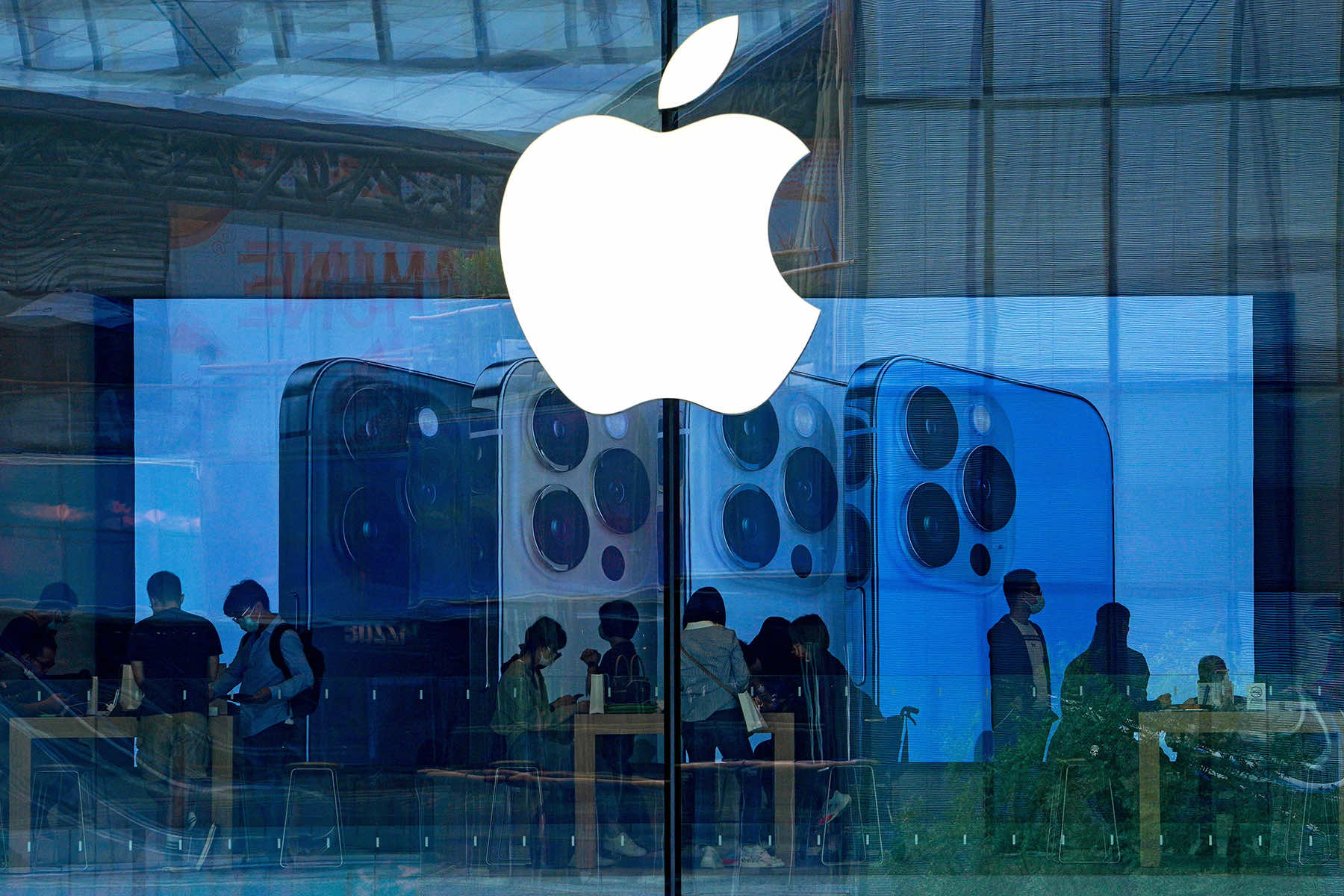
The sweeping new global tariffs released by Donald Trump’s regime threaten to dramatically reshape the economics of the technology sector. It places Apple Inc. squarely in the crosshairs of a half-baked policy designed to reduce U.S. trade deficits by taxing imports from countries with long-standing industrial ties to Silicon Valley.
Apple, the world’s most valuable company, is not mentioned directly in the White House’s announcement. But the 10% baseline tariff on all imports and sharply higher rates on countries including China, Taiwan, South Korea, and Japan cut straight through the arteries of Apple’s global supply chain. It hits everything from major offshore suppliers to key final assembly sites.
Under Trump’s new tariff structure, the U.S. will now impose: 34% tax on Chinese imports, 32% tax on goods from Taiwan, 25% tariff on South Korean products, 24% tariff on Japanese imports, and 20% tax on products from the European Union.
These rates go well beyond traditional trade penalties, amounting to a broad restructuring of cross-border commerce. Trump invoked emergency powers under the 1977 International Emergency Economic Powers Act to illegally bypass Congress, saying the measures were necessary to reverse decades of economic imbalance and offshoring.
For Apple, the implications are immediate. The Cupertino-based company relies on a globally distributed, highly optimized manufacturing network. While its products are designed in California, nearly every physical component is sourced abroad, and most are assembled in China.
“Apple is extremely exposed here,” said a senior analyst at the Institute for Global Trade Policy, who requested anonymity to speak candidly. “China is their final assembly point. Taiwan is their chip foundry. South Korea and Japan provide essential memory and sensor components. These tariffs layer cost upon cost across every stage of production.”
Apple’s most advanced processors, the A-series chips used in iPhones and M-series chips in MacBooks, are fabricated exclusively by Taiwan Semiconductor Manufacturing Company (TSMC). The 32% tariff on Taiwanese imports could inflate the cost of these chips substantially, even before they reach the iPhone’s Chinese assembly lines.
Meanwhile, Samsung (South Korea) and Sony (Japan) provide flash memory, RAM, and image sensors, respectively. These parts, too, would be subject to steep new levies as they are imported into the U.S. being embedded in finished products.
The Trump regime has framed his tariffs as “reciprocal,” falsely claiming they are calibrated in response to trade deficits with the targeted nations. But the blunt application of the taxes makes no distinction between finished goods and intermediary parts, leaving companies like Apple few short-term options.
While Apple has previously weathered narrow U.S.-China trade disputes, including earlier tariffs under Trump’s first term, the scale and uniformity of the new rules make exemptions unlikely. The regime has not clarified whether exclusions such as the $800 de minimis rule, which previously shielded small-value shipments, will remain in place.
“Apple’s pricing model was already under pressure from inflation, labor costs, and a strong dollar,” said Alicia Chen, a supply chain consultant in San Jose. “Now you’re layering in potential 25% to 34% import duties on almost everything inside an iPhone. Something’s going to give, and it’s probably going to be the retail price.”
The iPhone 15 Pro Max, currently retailing in the U.S. for $1,199, could see an increase of $100 or more depending on how Apple chooses to absorb or pass on the new costs. Accessory lines like AirPods, Apple Watches, and chargers that carry thinner margins may be even more vulnerable to immediate price hikes.
Beyond hardware, Apple’s logistics and inventory planning could also suffer. The company’s just-in-time manufacturing system and synchronized global launch cycles require a stable trade environment. Tariff uncertainty adds friction at every step of the process, from production forecasting to retail deployment.
Trump’s so-called economic team, in private briefings with reporters, has claimed without offering details that the tariffs could bring in “hundreds of billions” in annual revenue and compel other nations to lower their own barriers. Critics, including former economic advisers and global trade experts, warn that the likely outcome is consumer pain and retaliatory blowback from affected nations.
So far, Apple has not issued a public statement in response to the tariff announcement. But CEO Tim Cook has historically engaged with White House officials across administrations to shield the company from supply chain disruption. During the previous trade war, Apple succeeded in obtaining some exemptions for key products. This time, the odds are slimmer.
“These aren’t targeted tariffs,” said Mary Kasun, a trade attorney who advises multinationals on compliance. “They’re structural. They apply to everything from the same country. That gives the administration negotiating leverage, but it removes flexibility for companies to argue that their product is different or strategically important.”
If the tariffs remain in place for an extended period, Apple may accelerate its efforts to diversify assembly lines into India and Vietnam. Both countries have seen increasing investment from Apple’s manufacturing partners, especially Foxconn and Pegatron. However, those facilities currently lack the capacity — and in some cases, the technical skill — to produce premium devices at the same volume or quality levels as Chinese factories.
Further complicating Apple’s position is the risk of foreign retaliation. The European Union, Canada, and Japan have all signaled readiness to respond in kind, with potential taxes on U.S. tech exports or regulatory slowdowns for companies like Apple, Google, and Microsoft that operate globally.
China, Apple’s largest overseas market, could also respond by encouraging domestic alternatives or slowing approvals for new product releases. Analysts say Apple is caught in a perfect storm of geopolitical risk, macroeconomic inflation, and protectionist trade policy.
While it has the cash reserves and global footprint to endure turbulence, smaller tech companies that rely on similar component sourcing but lack Apple’s bargaining power could suffer deeper operational damage.
“There’s a misperception that these are taxes on other countries,” said Rafael Mendoza, a former U.S. trade negotiator now at the Center for Strategic Manufacturing. “They’re taxes on U.S. importers, which means consumers pay. And in tech, the most valuable products have the most globalized supply chains — which means the tariffs have the most layers of cost.”
In that sense, Apple’s dominant market position could become a liability. With limited domestic manufacturing, the company’s flagship products, from the iPhone to MacBooks to iPads, now sit at the intersection of nearly every major U.S. tariff increase. That exposure could fuel calls for Apple to relocate manufacturing to the United States, something President Trump has long pushed for in public remarks.
During his staged Rose Garden speech announcing the tariffs, Trump said the stiff levies would “bring factory jobs back to America,” promising that U.S. firms would see incentives to rebuild industrial capacity at home. But Apple executives have repeatedly noted that large-scale, high-precision assembly — especially for devices that sell in the tens of millions — cannot be easily replicated in the United States due to a lack of workforce specialization and supplier ecosystems.
Attempts to establish U.S.-based iPhone production have largely remained symbolic. A short-lived Apple Mac Pro line was assembled in Texas, but relied heavily on imported parts. In contrast, China and Taiwan support entire supply cities designed around Apple’s specifications, networks that would take years and significant capital to recreate elsewhere.
Still, Trump’s policy may force Apple to move more aggressively. While Vietnam and India have made strides in attracting Apple’s attention, both countries face infrastructure challenges. India in particular has struggled with yield quality and volume consistency, especially for higher-end models. Without a tariff exemption or a rapid capacity increase abroad, Apple may have no choice but to raise prices to preserve margins.
The consequences are not limited to the U.S. market. Apple’s international pricing strategy is tightly calibrated to exchange rates and tax regimes. If the U.S. becomes a higher-cost distribution hub, it may indirectly impact prices in other regions or delay product releases as inventory is reallocated to more profitable markets.
Some economists warn the ripple effects could extend to U.S. employment. While Apple does not assemble most of its products domestically, it employs tens of thousands of workers in retail, logistics, and software development. A major slowdown in hardware demand could affect hiring or compensation in those sectors. That would create a cascade outward to app developers, accessories makers, and third-party service providers that rely on the Apple ecosystem.
The company is also navigating political risks on both ends. In the U.S., any effort to raise retail prices could invite scrutiny from lawmakers or consumer advocates accusing Apple of gouging. Abroad, governments may view Apple’s association with U.S. trade policy as a justification for retaliatory scrutiny — including regulatory delays, antitrust probes, or pressure to comply with local data and app store laws.
In a worst-case scenario, Apple could face simultaneous commercial barriers in China, Europe, and the U.S., effectively squeezing the company from all sides of its revenue stream. That would mark a sharp reversal for a company that has long benefited from globalization, outsourcing efficiencies, and relatively free access to global markets.
Despite the risks, officials of the Trump regime falsely maintain that the tariffs will benefit American workers in the long run. They argue that high import taxes will incentivize companies to invest in domestic manufacturing and reduce reliance on nations that impose barriers on U.S. exports.
“The pain is short-term, but the gain is long-term sovereignty,” one senior official said in a background call with reporters. “We’re ending the era of economic submission.”
Whether companies like Apple can adapt quickly enough to avoid that short-term pain remains an open question. Investors and competitors alike will be watching closely when Apple reports earnings next quarter. Any signal that margins are tightening or demand is softening could reverberate across the entire tech sector.
For now, Apple’s silence speaks volumes. The company, known for its tight operational control and strategic communications, may be biding its time before announcing price changes or lobbying efforts. But unless exemptions are granted or tariffs reversed, the iPhone 16 and future product generations may cost more. The increases would not be due to the price innovation, but because of international policy shifts far outside the consumer’s view.
© Photo
Andy Wong (AP) and Mark Schiefelbein (AP)















